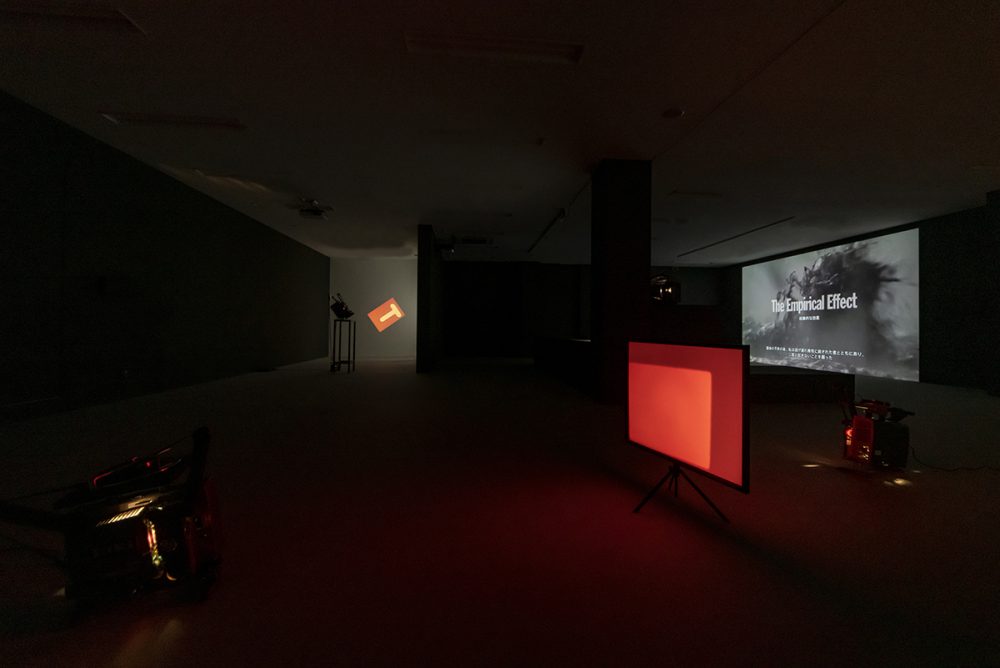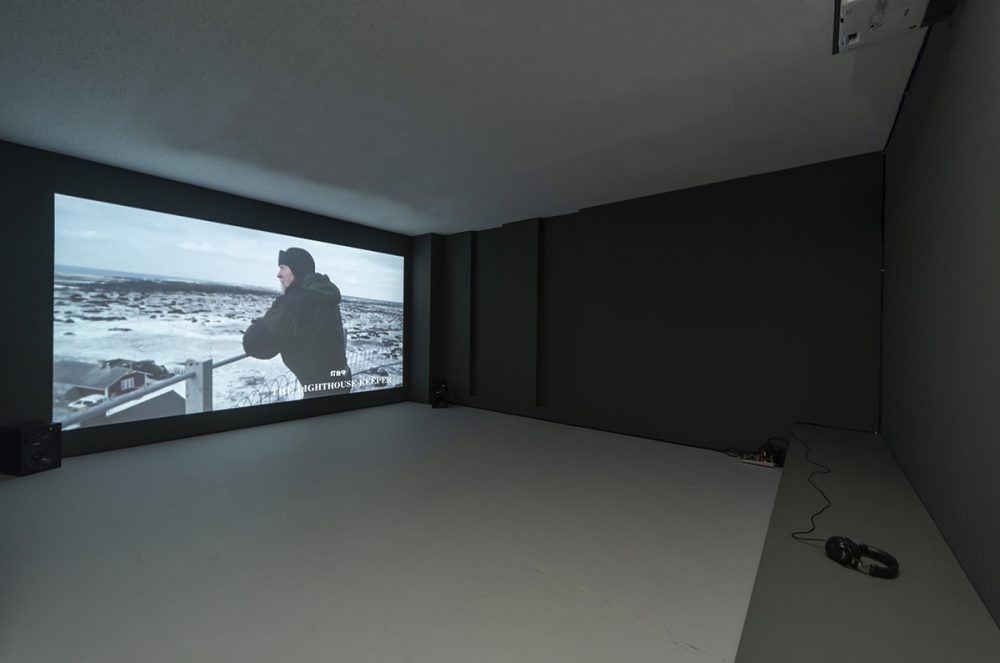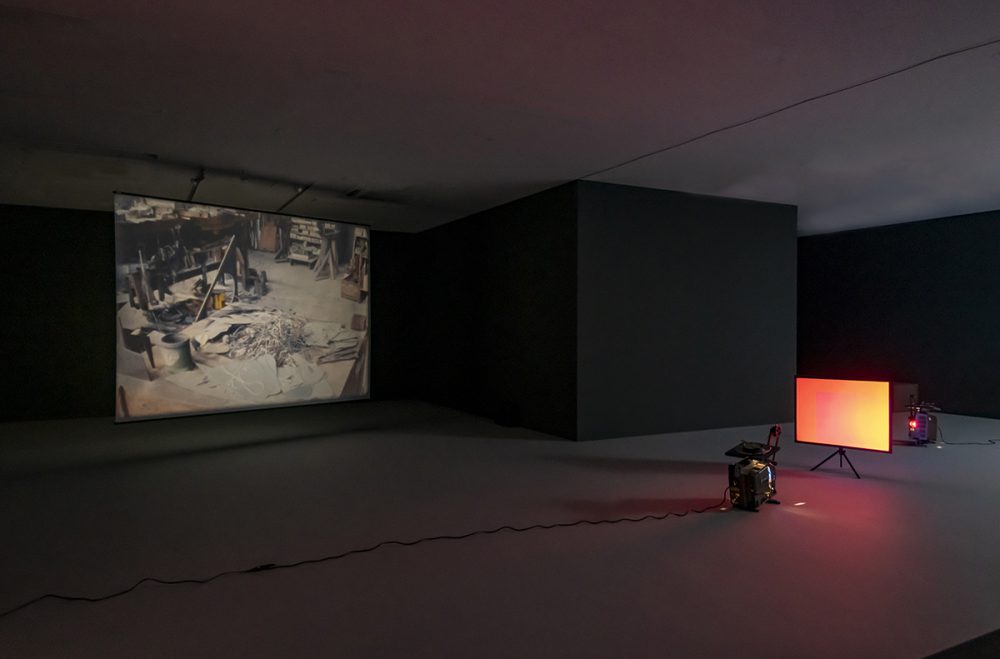Title |
|
Date |
2019-06-29 - 2019-09-06 |



The exhibition at CCA Kitakyushu is Rosa Barba’s first solo presentation in Japan and shows an insight to her artistic work with film and cinematic sculptures. The film Outwardly from Earth’s Center (2007) is a fictitious narrative about a society on an unstable piece of land that is in danger of disappearance. The situation requires the population’s collective initiative in order to secure individual survival and to allow the society to remain. The concept’s background is somewhat realistic since Sandön moves approximately one meter per year. The fictitious reports from experts strengthens the surrealistic atmosphere that creepily offsets the experience of what is first considered a beautiful documentary, and second a more abstract, absurd picture of a people’s struggle and vulnerability.
The second film of the show The Empirical Effect (2010) serves as an example of the blurring of fact and fiction that is typical in Barba’s film work. The topographical starting point of the film The Empirical Effect is the area around Mount Vesuvius in Southern Italy. The protagonists of the film, which was shot in the summer of 2009, are all survivors of the last active eruption of the volcano in 1944, and live in the so-called “Red Zone” in the immediate danger zone of the volcano. The Empirical Effect charts the stories of a society whose lives are infused with an incredible tension, yet are paralyzed and docile.
While the first two films engage with the complex relation between nature and human agency informed by natural catastrophes, alienation and staging of survival, Enigmatic Whisper (2017) is devoted to one of the protagonists of the twentieth century Alexander Calder (1898–1976). Shot in 16mm inside his studio in Roxbury, Connecticut, the film draws a filmic portrait through images of tools and work materials, still conserved as Calder left them, as well as the natural external context. Enigmatic Whisper is focused on one of Calder’s mobiles—kinetic sculptures that are among his most iconic works—still hanging from the ceiling of the studio. The rhythm of the film, with repetitively sudden changes of scene, is enunciated by drum and trumpet sounds, as well as by those emitted by the kinetic sculpture in movement.
The theme of sculptures as a form of cinematic expression is captured in the works Footnote (2013/2019) and Color Studies (2013). Color Studies consists of two projectors facing each other while sharing a single screen, and establishing a dialogue through the veil of projection. The projections show Barba’s recordings of photographic filters in red, yellow, and blue and thus, create infinite possibilities and variations of color. In once again investigating the material properties of film, here Barba also employs a musical approach: the screen is anchored by a music stand, as if it were a musical score; the rhythm is provided by the combination of colors used like notation sheets; the machines are two interpreters of a composition written by the artist. For the Footnote series Barba has back-lighted a handwritten text fragment, exposed on 70mm film, and anchored as an endless loop. The artist’s Footnotes appear as continuous thoughts and core in the idea of reproducing an experience of a given reality, through the means of cinematographic depictions.
Rosa Barba stayed at CCA Kitakyushu till June 29th, 2019.
This post is also available in: Japanese